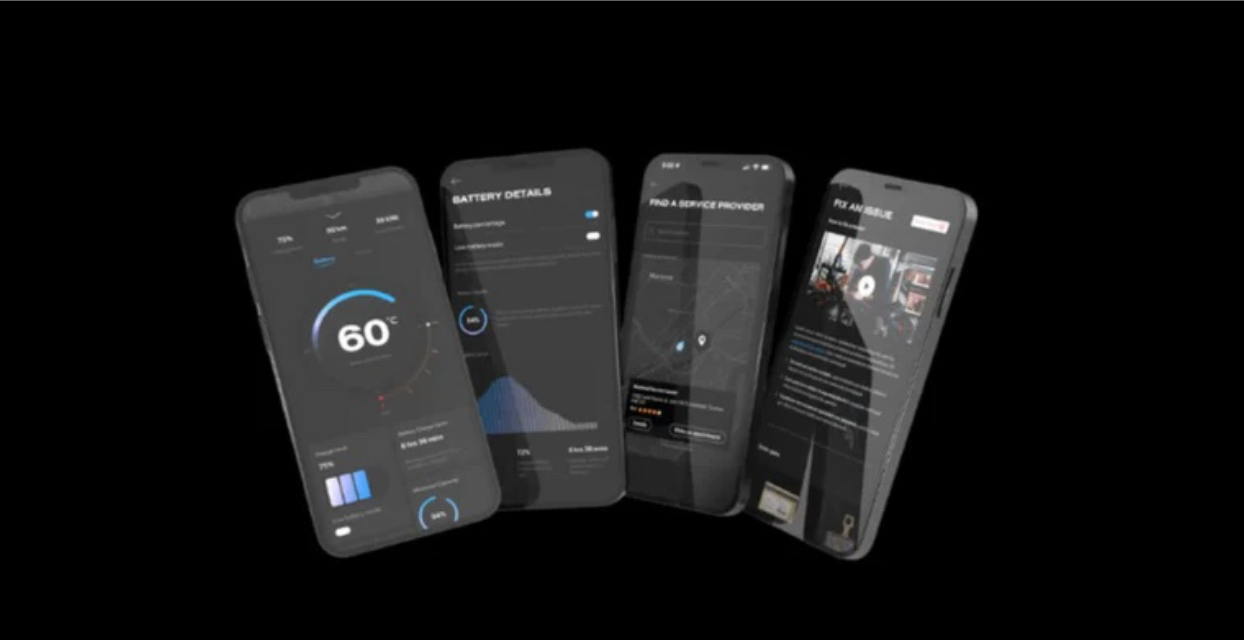We understand that navigating the scooter world can be daunting when you first start out. From battery voltage to types of brakes and all the acronyms used. So we've come up with a shortlist of must-know terms that will make the buying experience easier for you.
A
App Integration:
Smartphone connectivity allowing for remote control, diagnostics, or customization of scooter settings. Not all scooters are app compatible and not all features and settings are available in every scooter brand.
Anti-lock Braking System (ABS):
A safety feature that prevents wheel lockup during braking, maintaining control.
B
Battery:
The power source of the scooter, typically lithium-ion, determining the range and performance. When looking for a scooter its important to look at the voltage, this will tell you how much more powerful the scooter is (the higher the voltage, the longer range & more acceleration power you can have).
Battery Life:
The duration a scooter can operate on a single charge, typically measured in miles or hours.
Battery Management System (BMS):
Electronic control system that monitors and regulates power usage, temperature, and state of charge.
Brakes:
Devices used to slow or stop the scooter, can be mechanical (disc, drum) or electronic (regenerative braking). This is a very important feature to look into - you'll want to make sure your scooter has the braking capabilities to provide a safe ride.
Budget Scooter:
An electric scooter that balances affordability - depending on the brand, you may be sacrificing reliability and performance when buying a budget scooter.
C
Carbon Fiber:
A strong, lightweight material used in high-performance scooters like the EMOVE Roadster - lightweight is good for portability, but it can reduce riding stability.
Controller:
An electronic device that regulates the power output from the battery to the motor, controlling speed and acceleration. It's like the "brain" of the scooter.

D
Deck:
The platform on which the rider stands to ride the scooter, often housing the battery.
Display Panel:
The interface that shows information like speed, battery level, and distance. Depending on the brand, the display can be configured to display different information.
Dual Motor:
A scooter with a motor in each of the two wheels. This allows for enhanced power, especially useful for hill climbing or for heavier riders.
E
Efficiency:
A rating, usually stated as a percentage, that measures how well a component works to its potential.

F
Flat-Proof Tires:
Tires designed to resist punctures, often filled with solid materials or airless. Also known as puncture-proof tires, or self-healing tires.
Foldable Scooter:
Scooters with mechanisms that allow them to fold for easy transportation and storage. About 99% of electric scooters are foldable.
Folding Mechanism:
The system on the stem that allows the scooter to fold, making it more portable and easier to store.
G
Grips (also known as Handgrips):
Coverings at the end of the handlebars to ensure the rider doesn’t lose their grip. Usually made of textured rubber. Can be locking or non-locking and come in a variety of styles. Majority of electric scooter handlebars are compatible with standard BMX or MTB handgrips.

Grip Tape:
A rough surface on the deck that provides traction for the rider's feet, similar to a skateboard surface. Often replaceable.
H
Handlebars:
The crosspiece at the top of the stem. Holds the scooter’s controls, brakes, throttle, display, etc.
Hill-Climbing Ability:
The capacity of a scooter to ascend steep inclines, influenced by motor power and tire traction.
Hub Motor:
A motor built into the wheel hub, providing direct drive to the wheel.
Hydraulic Brakes:
Brakes that use fluid-filled lines to deliver strong, consistent power to the calipers
Hydraulic Suspension:
A type of suspension system using fluid-filled components to absorb shocks, providing a smoother ride on rough terrain.
I
IP Rating:
Ingress Protection rating that indicates how well the scooter’s electronics are protected against dust and moisture. Did you know? Apollo Scooters boast the highest IP rating in the industry - for your peace of mind.
K
Kickstand:
A small stand that supports the scooter when parked so it stays on upright position.
L
LED Lights:
Lights integrated into the scooter for visibility and safety in low lighting conditions. Can also be added aftermarket for additional visibility at night. They can be found in the front or rear of the scooter.
M
Motor:
The component that drives the scooter's wheels, usually measured in Watts.
O
Off-Road Capability:
The suitability of a scooter for use on unpaved or uneven surfaces, typically enhanced by knobby tires, robust suspension, powerful motor and high capacity battery.
P
Portability:
The ease with which a scooter can be carried and stored in small spaces, influenced by its weight, compactness, and ease of foldability.
R
Range:
The distance a scooter can travel on a single battery charge. The range of the scooter may vary depending on the speed and weight load of the ride. When looking for a new scooter, you will see scooter brands communicate the maximum range - this refers to the maximum calculated range based on conservative riding setting (considering an average weight load and a lower speed).

Regenerative Braking:
A system that converts braking energy back into electrical energy, recharging the battery slightly. It uses electrical braking system.
Reliability:
A metric that averages various factors like warranty, tire type, and water resistance to assess a scooter's dependability. In a few words - how often can you rely on your scooter as a mode of transportation.
Removable Battery:
A battery that can be easily detached from the scooter, allowing for easier charging or replacement.
S
Safety Features:
Essential components like anti-lock brakes, lights, and tires with enhanced traction for safer riding.
Sealant:
A compound typically added to a tubeless tire to make it flat-proof.
Sinewave Motor Controller:
A component that ensures smooth acceleration and better control of the motor, especially useful in off-road conditions.
Single Motor:
A scooter with one motor driving it, mounted either in the front or rear wheel. Most dual motor scooters can also operate in single motor mode.
Stem:
The vertical tube connecting the handlebars to the deck, usually folding and often adjustable for height.
Suspension:
The system (springs, shocks) that absorbs bumps, improving ride comfort.

T
Throttle:
The control mechanism, usually on the handlebar, that adjusts the speed of the scooter. Most common types are Trigger, Thumb, and Twist throttles.Tires:
Fitted over the wheels of the scooter, can be pneumatic (air-filled) or solid, affecting ride quality and traction.
Top Speed:
The maximum speed a scooter can achieve under optimal conditions.
Tubeless Tires:
Pneumatic tires without an inner tube, offering improved ride quality and reducing the risk of flats.
U
UL Certification:
An independent safety certification that ensures products meet certain governmental Scooters are now required to obtain the UL2772 and UL2771 UL certification in locations like New York City. Rest assured, all Apollo Scooters boast both of these certifications, and we will continue to ensure our scooters meet the highest standards.
V
Voltage:
A measure of scooter battery’s power. Higher voltage scooters typically have higher speeds, faster acceleration, and longer range.W
Watts:
A measure of electric scooter motors power output, measured in nominal or continuous Watts and peak Wattage, the highest level of power a motor can output at one time.Z
Zero Start:
A function that allows riders to start the scooter using the throttle only, without having to push the scooter to engage the motor.





